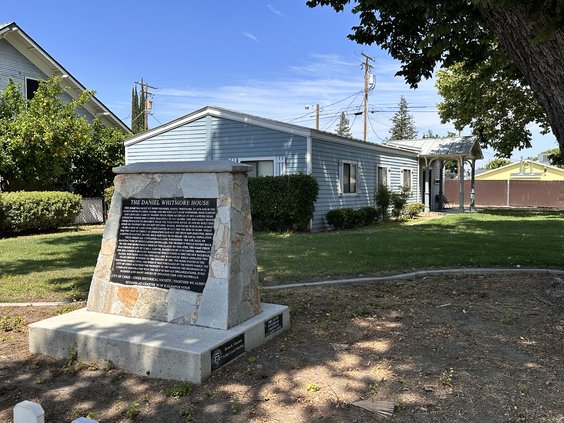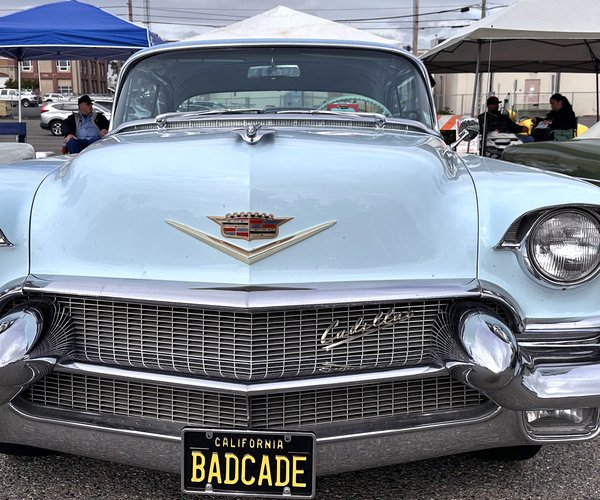Those wanting to delve into the history of Ceres may want to schedule an appointment to visit the Ceres Historical Museum this summer.
The responsibility of opening the museum for visitors fell to Sheryl Trout, who is the daughter of the late Phil Reynders who was instrumental in getting it established. The museum is a joint venture of the city of Ceres and the Ceres Historical Society.
“I randomly have people come down and ask to see the museum and I accommodate people for any time and day that they want to come down there,” said Reynders.
Typically it’s the older residents who ask to view what’s on display and also people who used to live in Ceres and moved away.
“Usually when I have people come they take quite a while and look around and we have a good talk about everything. Then I have people who donate a few things and they come and see it for quite a while and then look around. It’s kind of random.”
The Ceres Historical Society still exists but hasn’t met in a while as membership has waned with the passage of members.
“The members have all passed away so there’s very few of us left.”
The museum is located at 2928 Fifth Street on the grounds of the Daniel Whitmore Home, the first house built in Ceres.
Persons may request to see the museum by calling (209) 538-0239 or (209) 581-3134.
The museum is housed in a 24’ x 60’ double-wide prefabricated structure which was purchased for $95,000 with funds from the Ceres Community Foundation collected in the 1990s from donors for historical preservation. The building was then donated to the city of Ceres.
Displays honor Ceres’ farming roots. An early flour sack from the 1800s is on display along with photos of mules pulling harvesting equipment through the fields of grain, the primary crop in the area before irrigation was introduced in 1900 from La Grange Dam.
Photos, both large and small, give visitors a glimpse of early-day Ceres. A large photo blow-up on the wall shows Fourth Street in the days when Clinton Whitmore had an insurance office.
Other treasures on display include:
• Judge Gordon Olson’s gavel from the court that once existed where Alfonzo’s Mexican Grill is today.
• The grade book used by Mae Hensley in her first year teaching seventh and eighth grade in 1925 and 1926;
• A collection of matchbooks from Ceres businesses long since gone, seed packets from Ceres and old city bike license tags stamped with Ceres
• A formal chair belonging to the late Jenny Whitmore Caswell, once owner of the Clinton Whitmore Mansion;
• A section dedicated to the historic Bank of Ceres, which features a large photo of the bank’s interior and an actual accounting desk, signature card drawers and coin tray from the bank donated by Eldreth MacElrath.
• Copies of early CHS yearbooks, including the 1912 “the Echo” before it was renamed “the Cereal.”
• Tools from the William Roscoe Service Ranch are displayed before a large photo of an early Ceres blacksmith shop.
Pictures on display include the first graduating class (1912) at Ceres High School. The class attended school in a building that sat where Whitmore Park is today, but graduated in the Collins Warner Hall on Fourth Street, which was located where Loza’s is today.
The center of the museum has a display of home furnishing and appliances from the early 1900s.
One of the neatest sections of the museum is a small mock turn-of-the-century classroom complete with desk, antique wainscoting and portrait of George Washington.
The Society modified the 1930s garage for the display of larger items, including an old horse-drawn surrey once belonging to Hardy Fowler, who died in 2004.
The surrey was restored through funds donated by Hardy’s daughter, Mary Fowler of Boise, Idaho. The $2,710 repair job included replacement of some wood, new patent leather fenders and dash, new upholstery (complete with horse hair padding) and new paint. The work took only two weeks.
The surrey was gifted to the museum upon the February 2008 death of Caryl Fowler, the widow of Richard “Hardy” Fowler. The vehicle originally belonged to Hardy’s father, Carroll Fowler, the namesake for the school on Fowler Road.
The buggy was made by the Columbus Buggy Company in Ohio around 1900 and retailed in the Sears & Roebuck catalogue for about $28 then.
Hardy died Nov. 2, 2004. Carroll Fowler came to Ceres in 1901 to pursue farming. At the time of his birth, Hardy’s parents owned the land on which Smyrna Park and Carroll Fowler Elementary School exists today.





